Ms. Woolsey’s Soccer Ball Continues to Honor Challenger Crew
ESPN will feature the unlikely story of the Clear Lake soccer ball on July 1
“4..3..2..1.. and liftoff! Liftoff of the 25th space shuttle mission, and it has cleared the tower.”
Twenty pairs of eyes tracked the clouds of smoke and steam chasing the spacecraft. Flashing hues of the large VHS television were not enough to distract the spectators, who strained their ears to catch insight from the NASA commentator. 73 seconds into the launch, when the shuttle was engulfed by dark puffs and bright flames, no one thought of the black and white piece of leather tucked quietly inside. Yet this one relic would live on, stitching together the bond of a community resilient through space and time.
In 1986, librarian Amy Woolsey was beginning her career in education as an English teacher and girls’ soccer coach at Clear Lake High School in Houston. Adjacent to NASA property, Clear Lake was driven by a community of unique talent, which proved to be significant for the young teacher.
“Everybody that lives in Clear Lake is more than likely associated with the space program; whether they’re a physicist, mathematician, astronaut, secretary, the whole economy is pretty much pushed by NASA,” Ms. Woolsey said. “As a young kid starting out, it was a good place to start because you learned from a lot of really good people.”
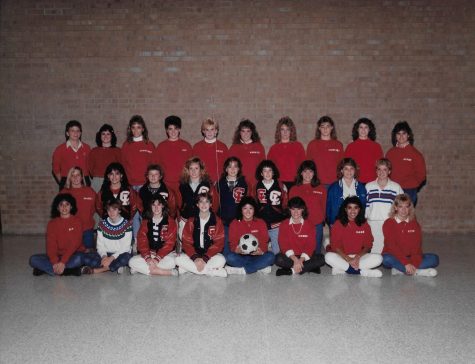
The bridge between the space program and the school extended to Ms. Woolsey when she was approached by Challenger Astronaut Colonel Ellison Onizuka with the idea of sending a soccer ball signed by her team into space with him. Mr. Onizuka’s daughter, Janelle, was a key defender on Ms. Woolsey’s newly established yet extremely successful team.
“Ellison Onizuka was a really fun-loving, nice, giving, selfless person who said ‘Hey we’re going to launch and be doing a news conference when district season’s over. We know you’re going to win, so why don’t we get everybody to sign the ball, and I’ll take it up and do the news conference for everyone in the world to see as congratulations,’” Ms. Woolsey said.
The team members took turns scrawling their names on the hexagonal leather, eager for their mark to make its way into space.
“We just thought it was the coolest thing in the world; we were all just at rapt attention waiting to see this conference,” Ms. Woolsey said. “It’s not every day that something you’ve touched goes to space.”
On Jan. 28, 1986, the day of the Challenger STS 51-L launch, Ms. Woolsey’s soccer team was gathered in her classroom around the large TV on a rolling cart, which Ms. Woolsey had checked out for the special occasion. Glued to the screen in excitement, no one foresaw the horrific explosion that occurred 73 seconds in.
“It was difficult. It was a very difficult and emotional day,” Ms. Woolsey said, eyes tearing up. “I can’t put into words how we felt when we saw the thing coming apart; it was just ‘Oh they’re jettisoning one of the engines; must be a new way they’re doing that.’ Just trying to reconcile some reality to what was going on, but that wasn’t what was going on.”
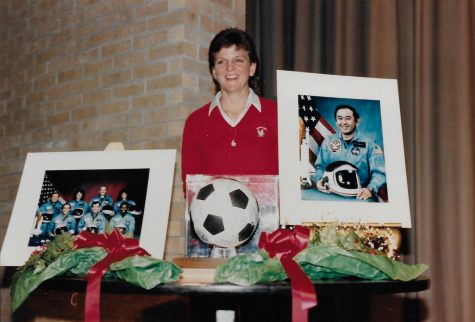
The explosion of the Challenger spacecraft took the lives of all seven crew members on board, including Mr. Onizuka. Recovered from the wreckage, however, was the very soccer ball in almost perfect condition, signatures and good luck messages still scribbled in dark ink.
“It’s crazy that a little piece of leather would survive something as horrific as that incident,” Ms. Woolsey said. “One of my players said she was asked the question how did it feel the day this happened. I found her response really moving because she said ‘I was furious. I was angry that the only thing that came back instead of people’s parents was a ball.’”
The ball was returned to the school following an official memorial service by President Ronald Reagan. It was placed atop a pedestal in a plexiglass case, commemorating the ill-fated shuttle that was indelibly linked to the community.
Mission Accomplished
It wasn’t until over three decades later that the soccer ball destined for space finally achieved its goal. In a nearly identical connection to Clear Lake as before, Expedition 50 Commander Shawn Kimbrough, whose son and daughter are current soccer players at the school, offered to take the ball on his mission to the International Space Station (ISS). The unlikely similarity only fueled the awe surrounding the ball.
“He chose to get the ball to its final destination and he did,” Ms. Woolsey said. “The parallel between the two guys is kinda cool; they’re both soccer parents and he’s as involved with the program as Ellison was in his day.”
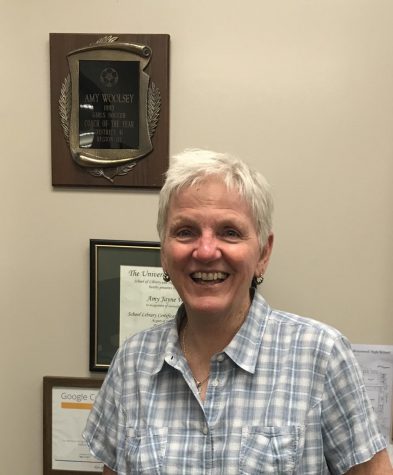
Ms. Woolsey stands in front of her Coach of the Year award from her time at Clear Lake.
The ball proceeded to travel over 73 million miles during its time on the ISS, exploring every module and revolving around the planet 2768 times. It was returned to Earth on a cargo flight, where Mr. Kimbrough led an official ceremony in November of 2017 of giving the ball to the Onizuka family and Clear Lake. Ms. Woolsey attended along with several of her past players, whom she hadn’t seen in years.
“We had a reunion and I just loved it. I was exhausted by the time that weekend was over; we had so much fun,” Ms. Woolsey said. “Many of the girls who I coached (who are now 47 or 48 years old) have kids graduating from high school.”
ESPN Takes Notice
While the ball rested in its case honoring the legacy of the Challenger, the story caught the attention of another: ESPN producer Max Brodsky. Originally in Houston as an eager Patriots fan watching Super Bowl 51, he decided to tour the nearby Johnson Space Center. Engraved on the wall was the improbable story of the Clear Lake soccer ball.
“Being that he’s a sportswriter, he said ‘What? That is not possible!’” Ms. Woolsey said. “It just put the seed into his mind and he decided he was going to figure out how to dig in and find out the whole story.”
Due to renovations at the high school, the ball had been relocated into the back of a trophy case, and few faculty members were even aware of its significance. However Mr. Brodsky was able to contact Clear Lake’s boys’ soccer coach Jered Shriver, who Ms. Woolsey mentioned was the perfect person to correspond with. Coach Shriver shared a special connection with the soccer ball and space program, as he was the son of former Astronaut Colonel Loren Shriver who had completed shuttle missions with Mr. Onizuka. The ball also bore the signature of Coach Shriver’s younger sister Rebecca, a player on Ms. Woolsey’s team in 1986.
Once Mr. Brodsky got hold of Coach Shriver, he wanted to hear the perspectives of those whose names were on the ball. Ms. Woolsey, along with five of her former players, Coach Shriver, and Lorna and Janelle Onizuka were then invited by ESPN to share their story. The segment will be featured on E:60, ESPN’s Sunday morning sports magazine show, on July 1 at 8 a.m.
“I was an athlete my whole life, and I always thought if I was ever on ESPN it’d be because of soccer, because I was on the championship team and we won Nationals. But I just happened to be there, it might have been any coach; it just happened to me,” Ms Woolsey said. “I’m looking forward to seeing the show, at the same time I think it’ll be very difficult. We didn’t see takes; we have no idea, so when it pops onto TV that’s going to be the first time we see it.”
A Period of Growth
Ms. Woolsey credits her time and experience at Clear Lake with shaping her view on education, which was critical to the beginning of her career.
“There’s a vulnerability,” Ms. Woolsey said. “I always thought when I was a kid in my early twenties that I was a teacher [and] I was supposed to know everything. And the students wouldn’t know anything. That was a horribly conceived notion of what teaching is. That’s not what it is at all.”
It was also Ms. Woolsey’s relationship with her students and players, as well as the community around her, that allowed the period to be an influential time in her life. While the brave space explorers and soccer parents demonstrated examples of professionalism, her students showed her just how impactful their bond with teachers could be.
“During my twenties was extremely growthful from being around these folks,” Ms. Woolsey said. “It’s not just a job; it’s a heart thing, education is. When something like this happens, it kind of magnifies how deep in your being everything is.”
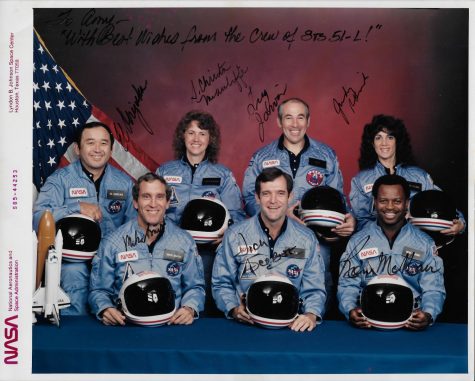
Ms. Woolsey still wishes an event as horrific as the Challenger explosion never would have happened. However it was in its aftermath that she learned more than she ever could from the classroom.
“I was a part of really a historical event unwittingly, it was not designed, and certainly not foreseen. I wish it had never happened, but I think personally am just honored to have some part in getting everyone through it,” Ms. Woolsey said. “Having that kind job at that particular time was just unscripted. I had no idea what the outcome was going to be. But you can’t learn those things in college. You just need to open up and let it in.”
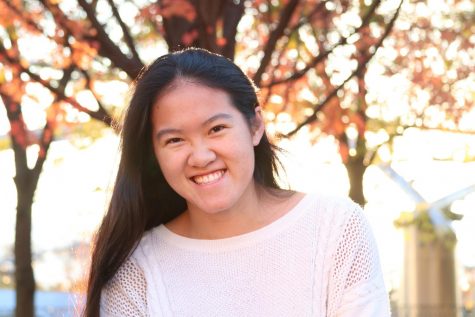
I've always been a storyteller, and I fell in love with journalism as an outlet to express my voice and share stories. When I'm not in the newsroom, you...


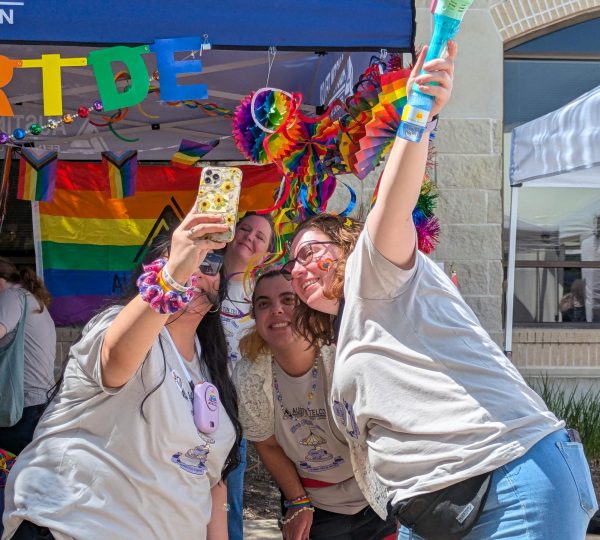
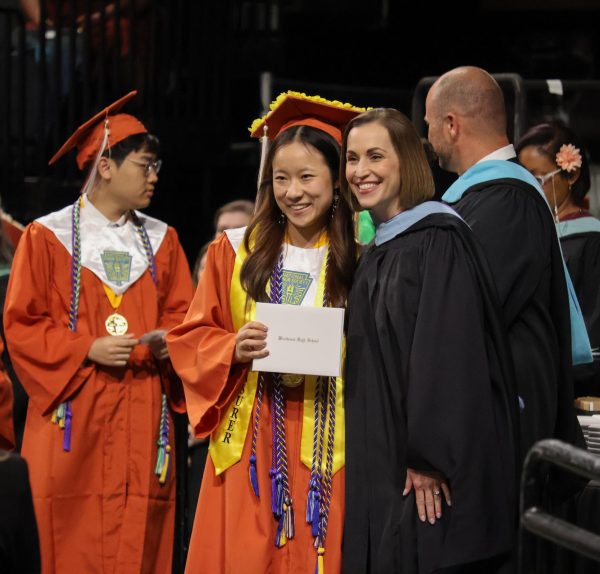
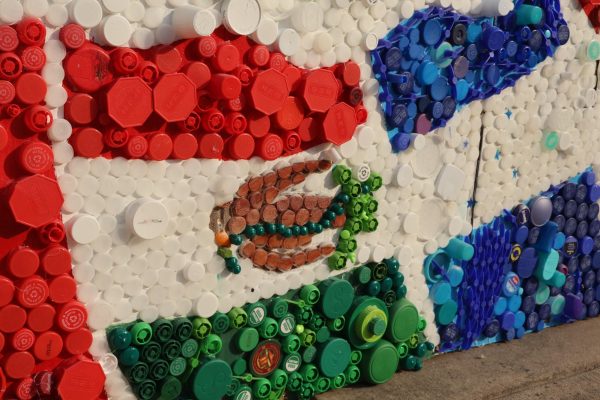

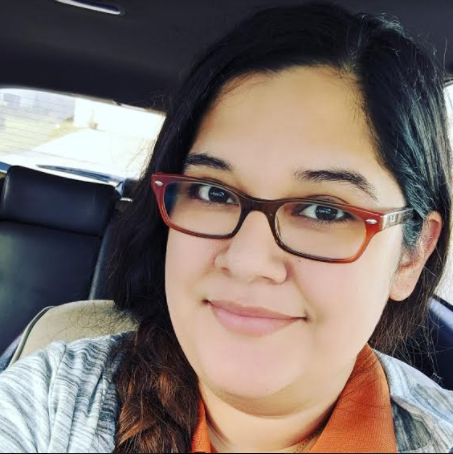
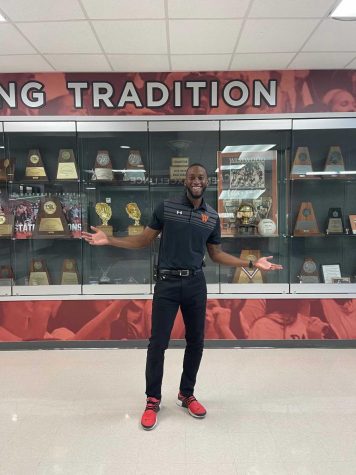
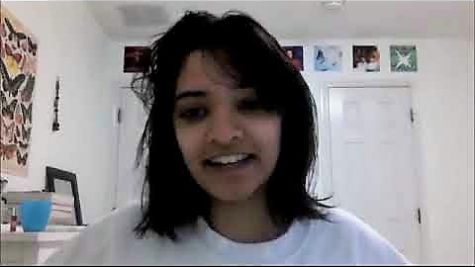
Sarah Day • Jul 3, 2018 at 2:37 pm
Such an amazing story. It still brings tears to my eyes for those who were there and lost so much and the incredible journey of the ball gives me goosebumps.
Lanie Catuogno • Jul 1, 2018 at 5:55 pm
Here’s a link to ESPN’s story about the Clear Lake soccer ball.